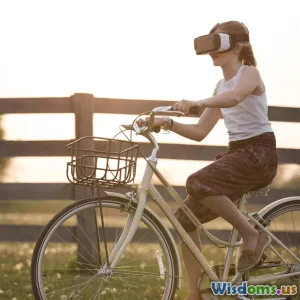
The Influence of Technology on Cultural Trends
8 min read Explore how technology shapes cultural trends, transforming societies through innovation, communication, and global connectivity. (0 Reviews)
The Influence of Technology on Cultural Trends
Introduction
In an era defined by ever-accelerating technological advances, culture no longer exists in isolation—it evolves in direct dialogue with innovation. From the smartphone that gives us instant access to global conversations to artificial intelligence reshaping creativity, technology exerts an indisputable influence on cultural trends worldwide. But how deep and pervasive is this influence? Is technology merely a tool, or does it act as a catalyst that molds the very fabric of society? This article will explore these questions by delving into how technology shapes cultural norms, artistic expression, communication styles, and community-building in today's fast-paced world.
Technology as a Catalyst for Social Connectivity
Breaking Geographic and Social Barriers
One of the most profound impacts technology exerts on culture is by transcending geographic limitations. The rise of social media platforms such as Facebook, Instagram, and TikTok has transformed isolated local cultures into interconnected global communities. This connectivity facilitates the blending and sharing of cultural expressions — memes, music, fashion trends — without boundaries.
For example, K-pop, once a niche South Korean music genre, has taken the world by storm through platforms like YouTube and Twitter. BTS, a group emblematic of this trend, reached international stardom by leveraging digital channels to cultivate a global fanbase. This phenomenon illustrates how technology not only allows cultural products to be shared worldwide swiftly but also invites diverse audiences to participate in and influence cultural trends.
The Rise of New Language and Communication Styles
Technology has forged new modes of communication influencing language and social interaction. Instant messaging and emojis have created a hybrid language that combines text and visual cues, altering cultural communication norms. The brevity demanded by platforms like Twitter’s original 140-character limit spawned a culture of succinct and clever expression, emphasizing impact over volume.
Research by linguist Gretchen McCulloch highlights that digital communication encourages creativity in language use, shaping culture dynamically rather than degrading communication quality. This evolving digital literacy reflects broader cultural adaptation as technology becomes intricately woven into daily life.
Impact on Artistic Expression and Creativity
Democratizing Creation and Distribution
Historically, producing and distributing art required gatekeepers such as publishers, record labels, or galleries. Technology significantly lowers these barriers, empowering individuals to create and share content globally.
Platforms like YouTube have turned amateur musicians into global stars. Billie Eilish, for instance, began uploading bedroom recordings before becoming a Grammy-winning artist, demonstrating technology’s role in democratizing artistic expression. Similarly, digital art tools and NFT marketplaces now offer new avenues for artists to present and monetize their work independently, expanding cultural production into emerging digital spaces.
Augmented Reality (AR) and Virtual Reality (VR) as New Cultural Mediums
Beyond traditional screens, AR and VR technologies are revolutionizing cultural experiences by immersing users directly in creative environments. Museums adopt VR to digitally reconstruct historical sites, providing interactive learning experiences that blend education with entertainment.
Moreover, AR apps influence fashion trends by allowing consumers to virtually 'try on' clothes or makeup, revolutionizing retail culture and changing shopping habits. These technologies demonstrate how culture constantly evolves in interaction with technological possibilities.
Technology Shaping Fashion and Lifestyle Trends
Data-Driven Personalization and Sustainability
The fashion industry is increasingly harnessing technology for trend forecasting using big data and AI analytics. Brands like Zara use algorithms to predict popular styles, accelerating the supply chain in what critics sometimes call "fast fashion."
Conversely, technology also drives sustainability trends as consumers demand environmentally conscious production. Blockchain offers transparency by tracking supply chains, reassuring socially responsible shoppers about ethical sourcing. Apps like Depop allow users to buy and sell secondhand fashion, integrating technology with a cultural shift toward sustainability.
Influence on Daily Lifestyle and Habits
Smartphones and wearable technology have redefined daily life patterns. Fitness trackers monitoring health metrics, smart home devices automating tasks, and mobile apps optimizing meditation and mental well-being illustrate how technology integrates into lifestyle culture.
The COVID-19 pandemic highlighted this integration: Zoom and other platforms normalized remote work and virtual socializing, shifting cultural expectations around workplace norms and social interaction. These trends are now embedded in society, underscoring technology's power to reshape cultural habits rapidly.
Ethical and Sociocultural Challenges
Cultural Homogenization vs. Diversity
While technology can amplify cultural exchange, it risks diluting unique cultural identities through globalization and homogenized content. Some scholars warn about the "simulacra" effect, where digital reproduction replaces authentic experiences and diversity. Large platforms often favor dominant cultures, exacerbating digital divides.
Awareness initiatives promote preserving indigenous languages and traditions using tech—such as the Endangered Languages Project, employing digital archives to protect linguistic heritage, balancing technology’s dual-edged impact.
Privacy, Surveillance, and Social Norms
Technological advances raise complex ethical questions affecting societal norms. Social media behaviors, online surveillance, and data privacy concerns challenge existing cultural values around freedom, trust, and identity.
Shoshana Zuboff’s concept of "surveillance capitalism" critiques how digital platforms commodify personal data, leading to new power dynamics. Understanding these implications is essential as societies negotiate cultural standards in an increasingly digital world.
Conclusion
Technology’s influence on cultural trends is immense and multifaceted. It serves as a powerful agent of change, stimulating artistic innovation, social connectivity, and redefining lifestyle practices. At the same time, it poses challenges that call for mindful engagement to ensure technology enriches rather than erodes cultural diversity and ethical standards.
As individuals and communities, recognizing how technology shapes our cultural landscape equips us better to harness its benefits responsibly and thoughtfully. Embracing technological advances can lead to a vibrant, interconnected cultural future—if balanced with critical awareness and preservation of unique cultural identities.
In essence, technology is not just an external force acting on culture; it has become integral to cultural creation, communication, and transformation — a dynamic co-author of humanity's ongoing story.
Rate the Post
User Reviews
Popular Posts





















